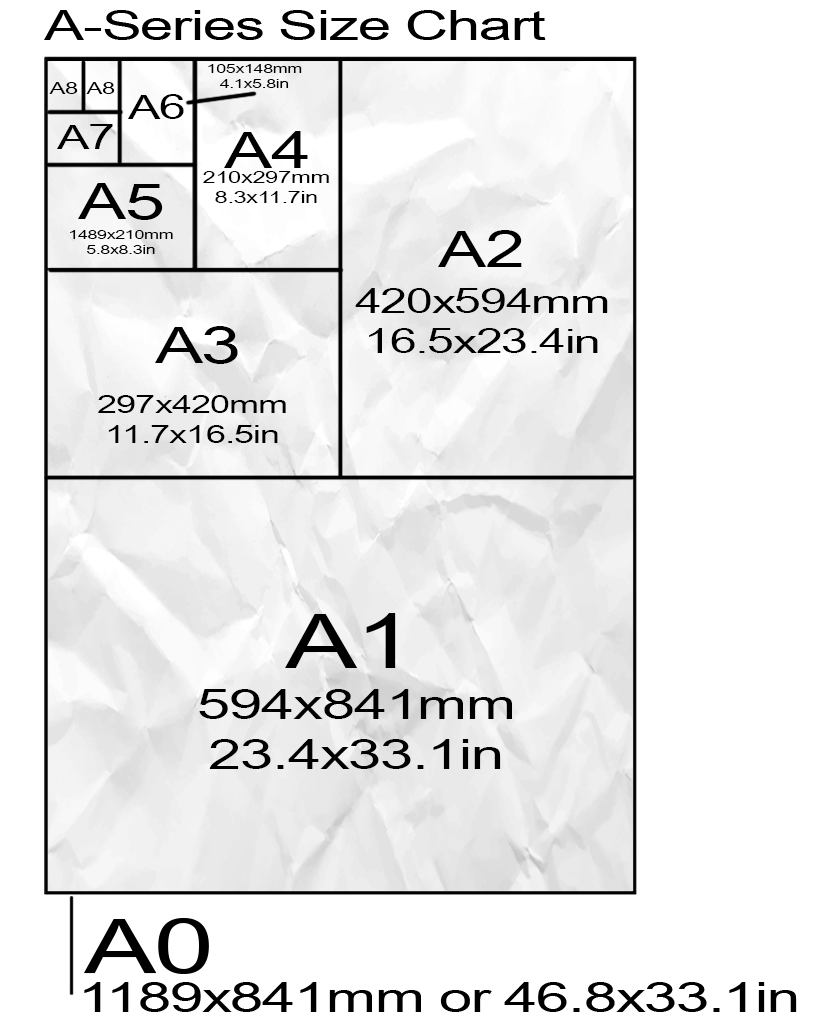by Matthew Russell - Posted 4 months ago

Welcome my CryptoComics Compatriots. Today I want to talk about paper. Ah, paper — the bane of every comic book creator’s existence. You'd think something as basic as the dimensions of a piece of paper would be straightforward, but nope, it's a quagmire of confusion and conflicting standards.
I had personally tried to hire a comic artist a while ago to work on a personal project. This artist came highly recommended. When this person sent me the pages, it was all drawn on simple printer paper and I needed a much bigger size to work with the layout. When I mentioned this, he tried charging me double to complete the project. I should have double checked the initial contract.
Just when you thought you had it all figured out, someone mentions A4, or B2, and you’re back to square one. Let’s untangle this mess, shall we?
When diving into the world of comic book creation, one of the fundamental aspects you’ll encounter is the various paper sizes used in the industry. Whether you're a seasoned artist or just starting, knowing the standard dimensions can make your workflow smoother and ensure your work is print-ready. Let’s break down the most commonly used paper sizes in comic book production.
When it comes to printing, whether for professional projects or everyday use, understanding the various paper sizes is crucial. The A and B series of paper sizes, established by the ISO 216 standard, are among the most commonly used dimensions worldwide. Let’s break down these paper sizes to help you choose the right one for your needs. One thing that you will notice is that the paper sizes pretty much follow the typical Golden Spiral (see image below).
The A series paper sizes are widely used in printing and stationery. The sizes range from A0, the largest, to A8, the smallest, with each size being half the area of the previous one when folded in half parallel to its shortest sides.
A SERIES SIZE CHART:
A0: 841 x 1189 mm (33.1 x 46.8 inches)
A1: 594 x 841 mm (23.4 x 33.1 inches)
A2: 420 x 594 mm (16.5 x 23.4 inches)
A3: 297 x 420 mm (11.7 x 16.5 inches)
A4: 210 x 297 mm (8.3 x 11.7 inches)
A5: 148 x 210 mm (5.8 x 8.3 inches)
A6: 105 x 148 mm (4.1 x 5.8 inches)
A7: 74 x 105 mm (2.9 x 4.1 inches)
A8: 52 x 74 mm (2.0 x 2.9 inches)

The B series sizes are less common but still important in certain contexts, such as poster printing and envelopes.
SIZE CHART:
B0: 1000 x 1414 mm (39.4 x 55.7 inches)
B1: 707 x 1000 mm (27.8 x 39.4 inches)
B2: 500 x 707 mm (19.7 x 27.8 inches)
B3: 353 x 500 mm (13.9 x 19.7 inches)
B4: 250 x 353 mm (9.8 x 13.9 inches)
B5: 176 x 250 mm (6.9 x 9.8 inches)
B6: 125 x 176 mm (4.9 x 6.9 inches)
B7: 88 x 125 mm (3.5 x 4.9 inches)
B8: 62 x 88 mm (2.4 x 3.5 inches)

Selecting the appropriate paper size depends on the project at hand. Here are some common uses for each size:
A0, A1, B0, B1: Ideal for posters, banners, and large-format advertisements.
A2, B2: Suitable for medium-sized posters, charts, and diagrams.
A3, B3: Often used for drawings, plans, and larger brochures.
A4: The most common paper size, perfect for documents, letters, and office use.
A5, B5: Great for booklets, flyers, and smaller brochures.
A6, B6: Typically used for postcards and small flyers.
A7, B7, A8, B8: Best for labels, tickets, and small-scale print jobs.
The standard size for American comic books is 6.625 inches by 10.25 inches. This dimension has become the industry norm, making it the go-to choice for most mainstream comics. It’s crucial to note that this size refers to the trim size, which is the final size of the comic after it’s been printed and cut.
If you are going the traditional paper and pencil route, I would highly recommend that you simply invest in some comic bristol board to do all your drawing on. You can pick some up from Amazon for pretty cheap. Here is a link to the Canson’s 11x17 Bristol Boards.
I would recommend certain paper although we are not sponsored by anyone, so it won’t matter to us which you choose. I just happen to personally like the feel and weight of this paper over any others for the pencil work.
Older comic books from the Golden Age and Silver Age often have slightly different dimensions. Golden Age comics are usually larger, measuring about 7.25 inches by 10.5 inches. Silver Age comics are closer to the modern standard but still slightly larger, at 7.125 inches by 10.5 inches.
Manga, the Japanese counterpart to American comics, typically comes in smaller sizes. The standard manga size is around 5 inches by 7.5 inches. This compact size makes it portable and easy to read on the go.
European comics, or bande dessinée, often come in a larger format, allowing for more detailed artwork and elaborate storytelling. These albums generally measure 8.4 inches by 11.6 inches, providing a more immersive reading experience.
While standard sizes are essential for traditional printing and distribution, many independent creators and webcomic artists experiment with custom dimensions to suit their artistic vision or digital platforms.
Just an FYI, our system will allow any custom sizes that you can come up with. If you want to, I would recommend checking out these absolutely fantastic comics that are currently on the marketplace.
Ensure the aspect ratio maintains visual balance.
Check with your printer for any specific requirements or limitations.
Remember to include a bleed area to avoid any unwanted borders.

Understanding comic book paper sizes is vital for any creator looking to produce professional-quality work. Each size serves a purpose, from the traditional American comic book to the compact manga format. By familiarizing yourself with these dimensions, you can ensure your artwork is appropriately formatted for printing and stands out in the crowded market.
Whether you're working on your next indie hit or planning a webcomic, keeping these sizes in mind will help streamline your creative process.
As we move forward, I will be bringing you quite a few different Perspectives on various art techniques, and varied opinions on either products or design options. Follow along with us on the comic making journey and don’t forget to upload your creations onto the marketplace.